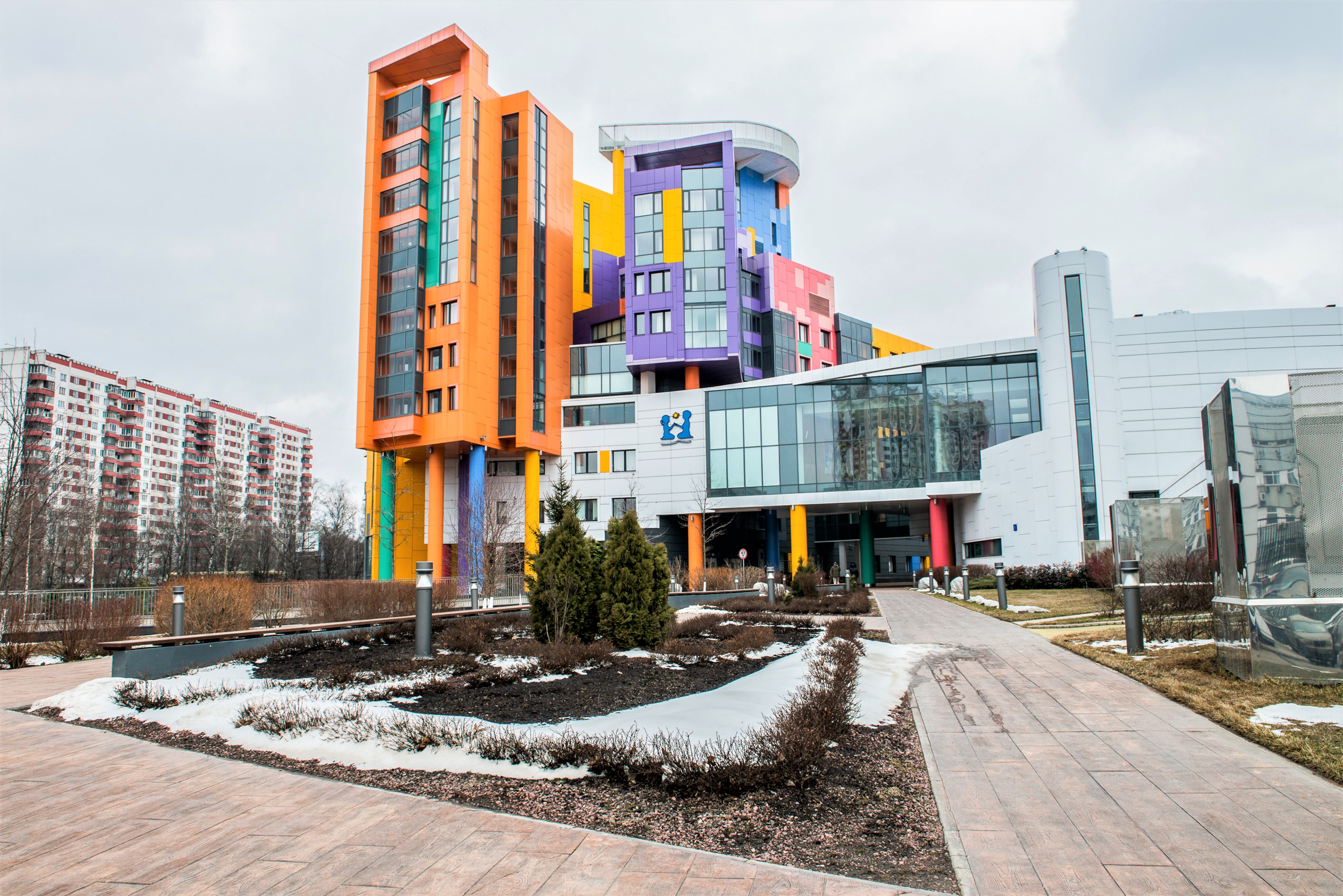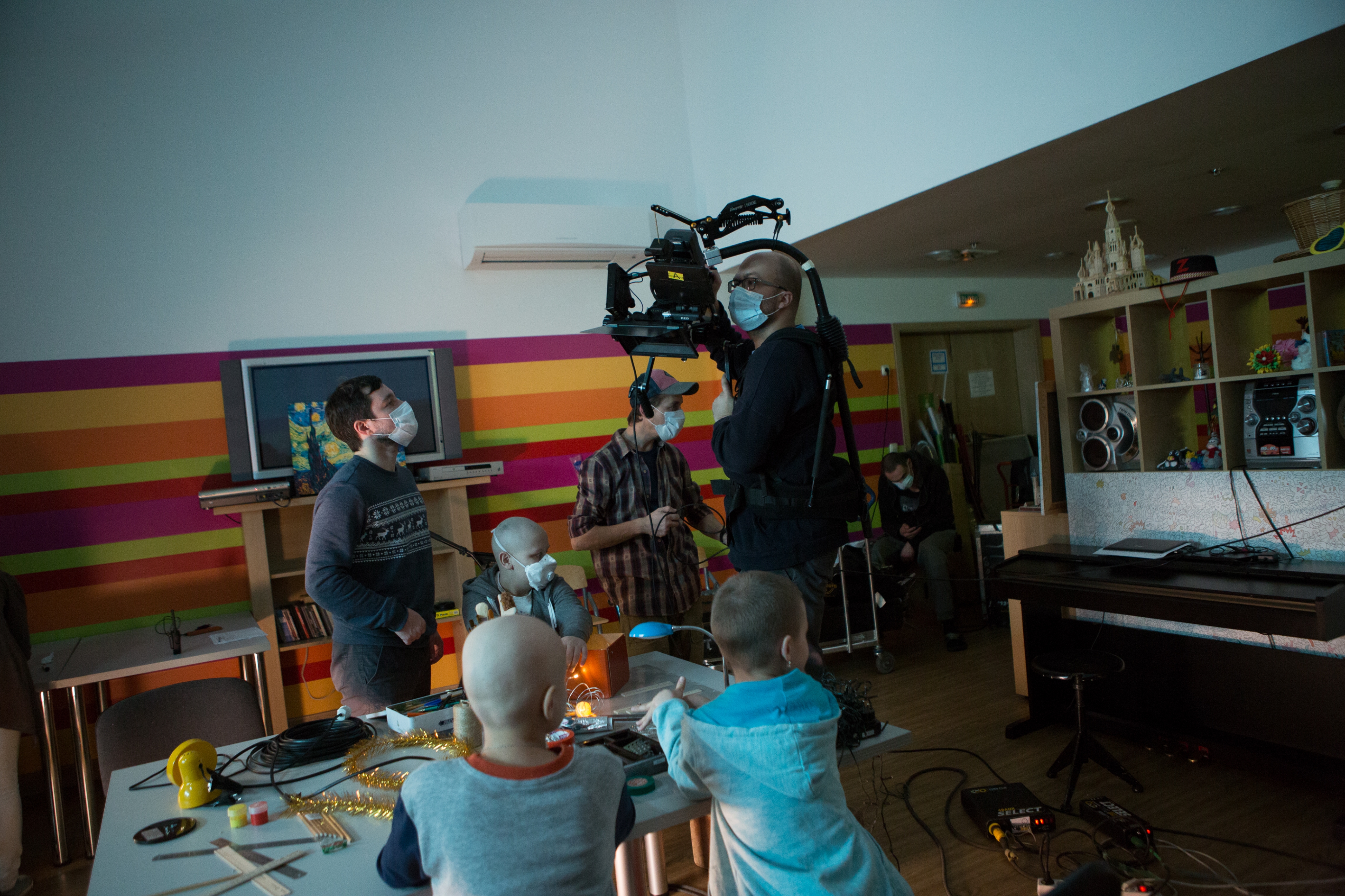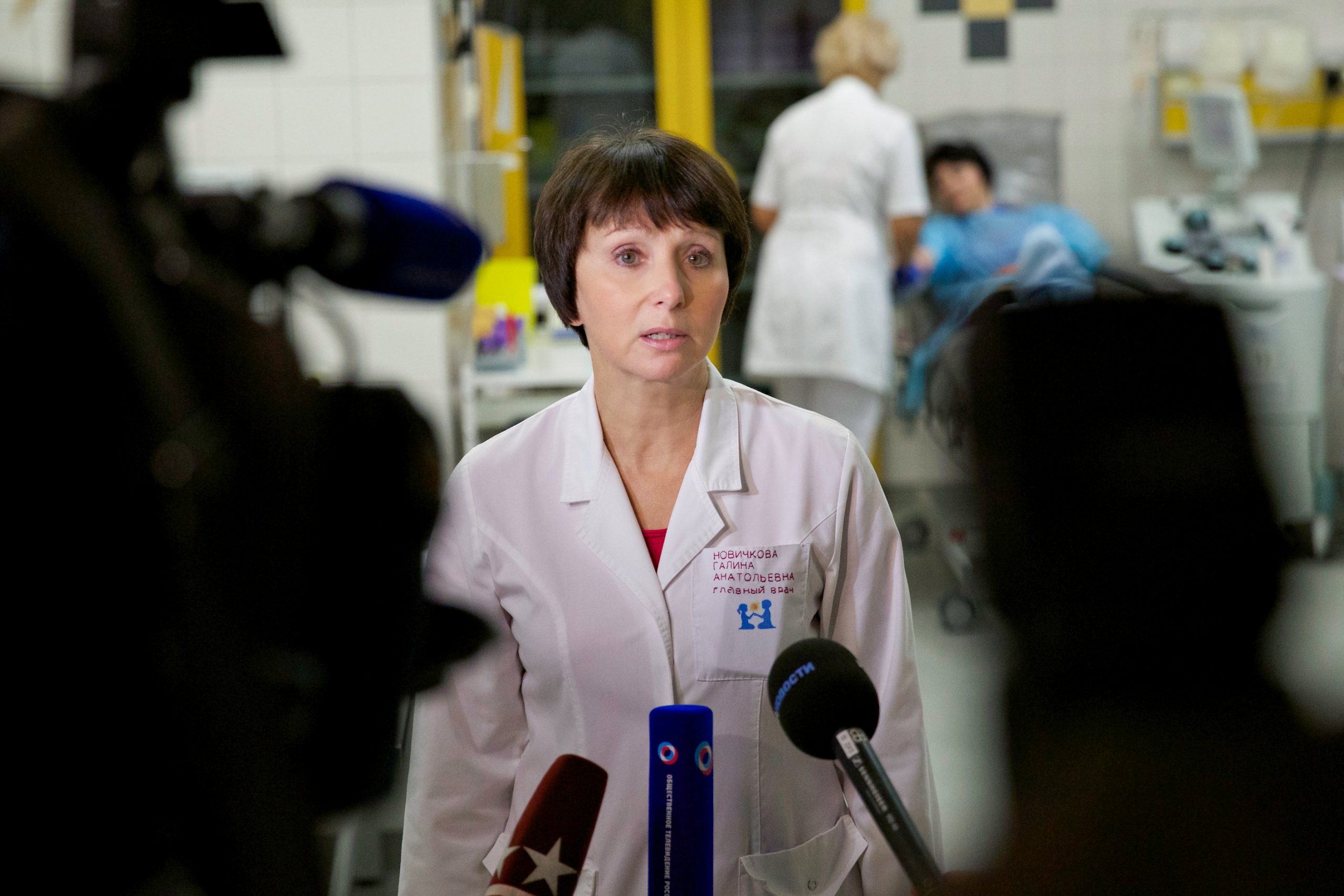“Every pound pays for someone’s life”: How England’s Gift of Life Foundation helps treat children with oncological illnesses in Russia
“Every pound, or dollar, or ruble, pays for someone’s life, and the value of life isn’t something you can measure in money,” says Galina Novichkova, who’s been working with the Podari Zhizn and Gift of Life charities since their very beginning. Today, she’s the general director of the Dmitry Rogachev Center of Paediatric Hematology, Oncology and Immunology, one of the world’s greatest and most modern medical centres for helping severely ill children. Over the last year alone, the centre took in 2,400 patients, of whom 900 were suffering from malignant diseases. More than 80% of those children are now recovering. This level of success is the product of many years’ dedicated work by doctors, volunteers, charity staff, and donors. Today, Galina tells us about the creation of this leading Moscow centre, and the part that England’s Gift of Life Foundation plays in its daily life.

Galina Novichkova with Chulpan Khamatova and Aleksandr Revva at the Gala dinner 2019
Paediatric oncology in Russia in the 1990s and today
The brightly-lit and spacious Dmitry Rogachev Centre opened in 2011, but the work that led to its creation began almost 20 years earlier. Post-Soviet Russia was a disaster zone when it came to paediatric oncology and haematology—in the early ‘90s, the global survival rate for children with leukaemia and other oncological diseases was over 50%, but in Russian clinics, the post-therapy survival rate was a mere 5–10%. Russia didn’t have the necessary equipment, or the medicines, or the specialists. It was to solve this problem that the Medical Research Institute for Paediatric Haematology was founded in 1991, with the Russian Children’s Clinical Hospital serving as its clinical base. In 1994, Russian doctors succeeded in their first donor bone marrow transplant, and in 1997 they were able to do the same for a transplant from an unrelated donor. Russian medicine made an incredible leap from 10% to 70% of children cured.
But the institute lacked its own dedicated base and resources. The Clinical Hospital didn’t have the full range of equipment needed to conduct all the necessary tests and examinations. Its doctors were forced to bring children to other hospitals for diagnosis and analyses, and practically smuggle in needed foreign and/or expensive medications. At that point, doctors were already beginning to look for sponsors. As Galina recalls, there were many who took an active part in their work: some donated money, others bought medicines, and still others helped transport the children. Foreign charities helped train specialists by funding extended internships in Europe and the USA. But it still wasn’t enough.

In Russia today less than 70% of children affected by cancer survive
“We didn’t know what we needed to aim for, but based on other countries’ examples, we understood that we needed to found some kind of charity, and make sure it had high visibility and impact”, Galina tells us. According to her, in 2003, the institute’s doctors and volunteers began to act more openly, to engage with the mass media, and to post on blogs and forums. They also organised individual moderately-sized events in order to attract donors. For example, in 2004, they put on a charity concert in Pushkin’s home/museum, presented by Chulpan Khamatova and Sergei Garmash, in order to gather donations for a blood irradiation device. However, the event only gathered half the necessary sum. Left deeply unhappy by this result, Chulpan decided to personally take part in the search for doctors. Since then, she has been an active participant in many of the institute’s charity events, alongside fellow performer Dina Korzun.
One of the greatest such events was the June 1, 2005 mega-concert at Sovremennik Theatre. Following the model of European charity events, Russian celebrities not only performed at the concert, but also talked extensively about the treatment of severely ill children, and about those children who have recovered and now lead healthy lives. “We will cure cancer,” the organisers told the visitors. “It’s just that we aren’t doing enough to be able to save more children.” The concert was a huge hit, garnering attention from every media source, and the institute’s work was widely discussed both in printed media and online.

At Dmitry Rogachev Center
Only a couple of weeks later, Dmitry Rogachev was celebrating his birthday in hospital. He was going through a second relapse after bone marrow transportation. There was no longer any hope of recovery. Walking through a summer Moscow alongside one of the organisers of the “Donors for Children” volunteer movement, he described how when he had his first relapse, he didn’t want to go to Moscow, and the local doctor said, “No need to be so sad. You’ll get to visit the Kremlin, eat some pancakes with Putin.” Dmitry joked that, being a realist, he wasn’t counting on meeting Putin, and besides, his own schedule was too full, what with chemotherapy and operations all over the place.
Profoundly moved by the conversation, Anna wrote an appeal via a LiveJournal post, asking Putin, “What would it take for you to have some pancakes with Dmitry?” To everyone’s surprise, the post reached the president, and the clinic got a message saying that Putin was going to meet the boy.
The pair met in August, with Dmitry’s mother and three doctors present. Galina was one of them. They gave the president a tour of the clinic, and told him about its operations, and their results and complications. Dmitry gave him a colourful drawing, saying that this was the kind of hospital he wanted. And then, on August 19, 2005, the government ordered the establishment of the Dmitry Rogachev National Research Center of Pediatric Hematology, Oncology and Immunology.

Dmitry Rogachev Center in Moscow, April 2015
How Podari Zhizn and Gift of Life help
Although the government provided funds for the construction of the new centre, it was a huge project, and very complicated on a technological level. Construction was due to finish in summer 2011, but there were children in need of treatment there and then. That’s why, in 2006, the Podari Zhizn Foundation came into existence, co-founded by Chulpan Khamatova and Dina Korzun. In 2011, its sister charity Gift of Life was founded in the UK, and began to gather funds for the same projects.
The two charities work to help not only the Dmitry Rogachev Center, but also many hospitals throughout Russia. Still, the great majority of funding goes to Moscow, since that’s the place where doctors develop new medications, run studies, and train specialists from across the country. It also treats dozens of times more children than anywhere else.

At the Gift of Life Gala fundraising dinner at the Savoy, London 2018
The charities help in every way possible, from buying equipment (when the centre first opened, Podari Zhizn paid for around 400,000,000 rubles’ worth of equipment) and medicines, to organising the work of volunteers, looking for donors, and providing financial aid to patients’ families. Gift of Life is constantly working to deal with extremely difficult challenges which can mean life or death for some of the children—helping find unrelated donors, paying for surgeries conducted by foreign experts, and buying medications which aren’t registered in Russia. These medications often make the difference between success and failure for an operation. It’s not uncommon for a patient to turn out to be allergic to the prescribed medication, and its only replacement is an expensive foreign drug. It’s only thanks to the charity’s aid that the patients’ families can gather the money required, and the children can recover.
Gift of Life also does a lot to help educational projects. Recently, the centre was able to send several surgeons for internships in Italy using the charity’s money. Even more importantly, the charity sponsors doctors to attend congresses and conferences, something which is crucial in the medical sphere. Many additional lives can be saved through building relationships with foreign colleagues, and learning about new technology and medicines.
“Without this, it wouldn’t matter how big and beautiful we could make our clinic, because we’d never get anywhere”, Galina tells us as she emphasises the importance of providing ongoing education for health professionals.
This new knowledge isn’t confined to the centre alone. Specialists come from all over the country to train here. According to Galina, the priority right now is to study accurate diagnostics, since 40% of the time, they result in changes in new patients’ diagnoses. An incorrect diagnosis means incorrect treatment, and that can result in tragedy.
Meeting idols, the photography club, and the Tula pryanik
The charities’ work includes a great volunteer movement, organising entertainment for the children and inviting their celebrity idols to meet them. “Strange though it may seem, as the parents are leaving, they tend to confess that they had a wonderful time at the hospital, because this is the place where all their child’s dreams have come true,” Galina tells us.

Julia Boleyninger, Podari Zizhn coordinator at Dmitry Rogachev Center, going to give a gift to a child on his birthday
The charity’s volunteers also help organise birthday celebrations for the patients, as well as film screenings, and a variety of performances and classes.
You’d think that all this should take a back seat to the charities’ main work, but in reality, these vivid experiences are important for children, and help them get better. “It helps children feel at ease during a difficult time. It matters on an emotional level,” explains Galina.

Filming of the New Year’s Eve video clip with patients of the Center and Chulpan Khamatova, 2017
The children who have been through treatment also have much to say about the importance of emotional support. For example, Margarita Khairullina, who managed to overcome leukaemia with the aid of the centre’s doctors, says this: “There’s a huge team of doctors, volunteers, and donors working to help a single patient get better. All of these people help you deal with the disease. I never felt lonely.” After coming home, Margarita knew that she would never become a professional triathlete, even though sports were a major part of her life before she fell ill. But while she was having treatment, she met volunteers who were teaching the children photography. Margarita found herself getting very interested, and decided to become a journalist. Now, as she studies professional photography, it’s her turn to come to the hospital and tell children how they can use a camera to go beyond the limits of their ward and discover something new in familiar corridors.

Margarita Khairullina with Dina Korzun at the Winners Games
Galina Bolshova, a fellow leukaemia patient, tells a similar story. According to her, the charity’s volunteers always made sure she didn’t feel alone, and taught her that she could always have fun, play, and be happy, even if all she could do right now was move around in a five-metre radius with an IV drip in her hands. She gave us one example that stuck in her memory of how spending time with volunteers can help someone get better. After a chemotherapy course, Galina developed complications relating to her mouth and throat. For days, she was barely able to eat, drink, or talk. But then, a volunteer friend came to see her, and brought her a Tula pryanik as a gift. As they watched a film together, Galina didn’t even notice herself eating the whole pryanik and following it up with a glass of milk. Apparently, the pain had retreated in the volunteer friend’s presence. “I was in constant pain for three days, but at that moment, I forgot all about it. The good mood, spending time with someone, and the wonderful person with a pryanik gave a big boost to my healing.”

Galina Bolshova holding a picture of herself when she was ill
Both of these stories, and hundreds like them, owe their happy endings not only to the magnificent work of the doctors, but also to the active efforts of the charities. While the volunteers in Moscow helped the girls to hold up mentally throughout their treatment, and stay positive even through the hardest and most painful times, Gift of Life and Podari Zhizn’s volunteers and staff were helping to buy and import the unregistered but vital medicine Erwinase. Erwinase is the only analogue for the Russian Asparaginase, to which both of the girls turned out to have an allergy. In both cases, it was only through the donations gathered by the charities that their families were able to afford the medicine.
What about the future?
According to Galina the general director, Gift of Life is truly a miracle for the centre. “It’s taken on a burden that’s too heavy for us in Russia. I know without a shadow of a doubt that it’s full of noble-spirited people who give their all to their work, and every donated pound that they gather pays for someone’s life to be saved.” But we can see that in reality, every pound pays for a lot more. The centre’s doctors don’t just save individual children’s lives. They work on new technologies, medications, and methods for diagnostics and treatment.

At Zima Russain Restaurant in London, August 2019
Right now, work is ongoing on a new building for the centre, which among other things will be host to a cellular technology lab. Since last year, the centre’s staff have been conducting research in this area. For now, this breakthrough treatment methodology is only at the experimental stage in Russia, used only for life-threatening conditions. It will take vast funds to develop more such laboratories and advance the research. But according to Galina, around 40 children whose illness didn’t respond to any other therapy have received this treatment, and 70% are in full remission. These are children who’d normally be sent home to await the end.
The results of this and other similar research are striking. Over the last 30 years, Russian paediatric oncology has taken a massive step forward. Before, it could only save the lives of 5–10% of children, but now the centre can cure around 90%.
And that’s factoring in the fact that the centre is treating an enormous number of ill children. The clinic is always 30–40% over capacity, pairs of children are squeezed into single cots, there are 200 people in the 90-capacity outpatient clinic, and the same goes for the facility where children at the ambulatory stage of treatment stay with their parents. The charities work to help find accommodation for those undergoing tests or rehabilitation, taking some of the burden off the clinic. But these are only temporary solutions. The long-term solution will come from new buildings and new technologies. Their construction and development, partly funded by various charities, is the key to a brighter future where no child dies of cancer.
Text by Marina Mosyakova, Gift of Life, and Elizaveta Kolesnikova, Zima Magazine.
Thanks to your donation more children in Russia will get a chance to survive cancer. DONATE NOW

